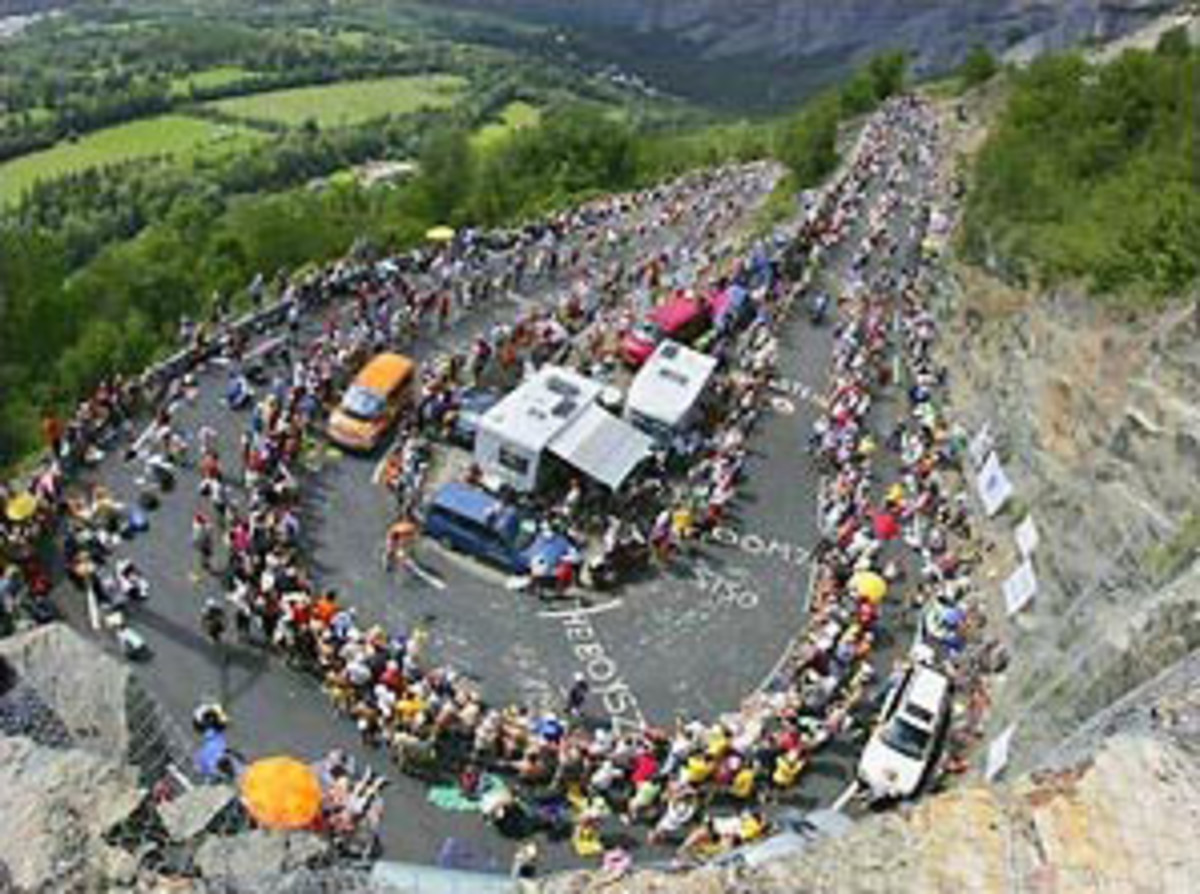
Tour de force: L'Alpe d'Huez is Tour's storied stage
A British sportswriter took me aside during my inaugural Tour de France to explain: "After I covered this stage for the first time, I never again used the word 'heroic' to describe an athlete in any other sport."
The legend of L'Alpe d'Huez, the most storied stage of the Tour, derives from the 21 switchback turns to the top. On a map, the road to this ski station near Grenoble winds like intestine, a felicitous resemblance given how gut-busting the climb. Riders have already ascended a series of Alpine peaks -- most of them also hors categorie, which is French for "too friggin' steep" -- before they reach this ultimate summit. And it says beaucoup that almost every summer since 1976 the glory and distinction (and tourist revenue) of being a stop along the Tour route has been L'Alpe d'Huez's alone.
Race fans from all over Europe and beyond camp out overnight by the sides of the road. They rise early to scrawl messages of support in chalk and spray paint on the rock and roadbed, and lather themselves up while following the first five or six hours of the stage on battery-powered radios and TVs. Some even mount bikes of their own to road-test the mountain. Then, finally, after the absurd and kitschy caravan publicitaire has made its halting way past; and the outriding gendarmes have puttered self-importantly by; and the July sun has had a chance to turn the tar of the road to molasses, the riders appear. Out those fans run, to within inches of their heroes' ears, to yell Allez! and Hop! and Avanti! No other sport permits fans to get so perilously close to athletes, certainly not at so critical a time.
From this Alpine aerie in 1987 I watched the Irishman Stephen Roche not quite win, but gouge just enough out of a rival over the final few hundred meters to signal that he had the stuff to mount the podium in Paris. I watched a proudly drug-free American named Andy Hampsten triumph in 1992. At L'Alpe d'Huez riders like Fausto Coppi, Bernard Hinault, Lance Armstrong (who won a particularly brutal iteration of this stage, a time trial up the mountain in 2004) and Giuseppe Guerini (the winner in 1999 despite being knocked off his bike on the ascent by one of those overzealous fans) all proved their worth. The name of a stage winner graces a plaque at each hairpin, making for a venue that doubles as a hall of fame.
The next morning, down the mountain in Bourg d'Oisans, the riders with enough left prepare to set off again, knowing that they're introducing coffee and croissants into bodies that have survived the most daunting day in a succession of them.
Golf offers up a challenge of grass and sand and water. Sailing demands mastery of meteorology and oceanography. Cycling, at L'Alpe d'Huez on this day, presents to its would-be champions -- its aspiring heroes -- the most timeless and pitiless of the physical sciences. It offers geology, and a chance for those who ascend to ascend.
2.The Palestra, Philadelphia. I'll take basketball's Quaker meeting house for its intimacy and perfect scale, but also because Penn still shares it with other schools in the city.
3.Roland Garros, Paris. Not for me stuffy, rainy Wimbledon; I love the time of year of the French Open, and the colors at Court Central -- the teal of the billboards; the ochre of the terre battue.
4.West Fourth Street Playground, New York. As arena football is to the original, this is to basketball -- a literal cage, with the ever-changing street scene of Greenwich Village supplying a muse for every schoolyard move.
5.Municipal Auditorium, Barre, Vt. USA Today named this place, built in part of granite pulled from the local quarries, one of the top 10 spots to watch a high-school basketball game; I'd choose "the Aud" even if my Vermont Frost Heaves hadn't won an ABA title there last March.





